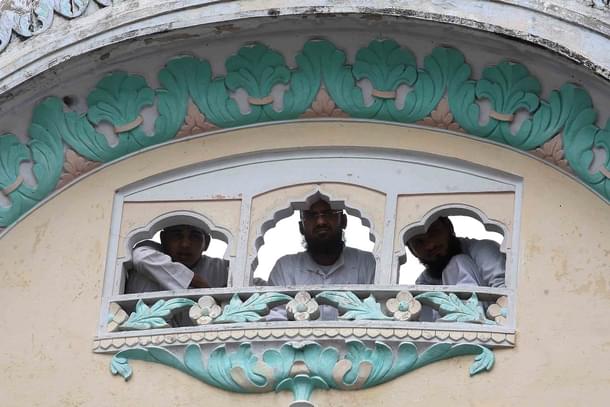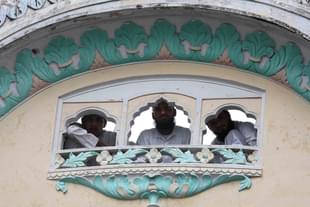Culture
Breaking The Self-Imposed Siege: Why I Expect More And More Indian Muslims To Come Out And Join The Nationalist Mainstream
Arshia Malik
Dec 07, 2022, 04:50 PM | Updated 05:37 PM IST
Save & read from anywhere!
Bookmark stories for easy access on any device or the Swarajya app.


The idea that Indian Muslims are one homogenous group has been discredited in recent years with the increased use of social media, technology, and digital platforms.
According to the 2011 census, Muslims form the largest religious minority in India, accounting for about 174 million people or 14.4 per cent of the country's total population. The term 'minority' is an inaccurate description of them as they make up the third largest Muslim population after Indonesia and Pakistan.
However, Indian Muslims are considered minorities in the sense of relative influence rather than group size.
The typical image that comes to mind from this term — ’minority’ — is that of a united and hostile organisation that is constantly at odds with the government and other groups.
Images and news reports in the media undoubtedly support this viewpoint, but in recent years, as social media usage increased and more digital platforms and self-publishing options became available, several voices within the Muslim community began to emerge.
For many years, the idea that Muslims too had a caste structure was taboo, with even scholars avoiding the subject.
Even we middle-class Muslims were taken aback by the existence of Pasmanda Muslims, their huge population — which was greater than that of the Ashraf (upper class elite) — and the extent to which they had been absorbed into the national culture.
Add to that the growing and outspoken agnostics, atheists, or cultural Muslims who rejected the medieval notions of faith in god, did not demand Sharia laws based on the collected Hadith because of the alliance between the state and the ulema, or wanted no morality enforcement for their lack of religious commitment.
Given Muslim attitudes toward those who are doubters or heretics in Islam, virtual Internet groups gave them the safety and security to express opinions they would ordinarily be unable to do. Freethinkers are not typically treated kindly by the religion of peace.
Even among the believers, there was a wide variety of Muslims — from the radical ones who are waging their own internal insurgency against the Indian state under the guise of community upliftment to the extremist ones who typically make the news when killed in counterterrorism operations (the Kashmir terror groups fall into this category) or make statements that are threatening in nature (case in question, the recently banned PFI, before that SIMI and IM).
When asked whether Sharia laws should be imposed on Muslims living outside of Islam's prescriptive precepts, with punishments of stoning for adultery, chopping off hands for theft, and beheading for blasphemy, moderate Muslims frequently appear in PEW surveys and respond in the affirmative; despite never putting their own children through madrasas and making sure they receive an education in English.
These Muslims are the most outspoken about the 'oppression Olympics' (paranoia about Hindus oppressing minorities everywhere), even though they are free to protest it in the liberal democracy of the very nation they loudly criticise.
The liberal Muslims are those who blend seamlessly into Indian culture and uphold the secular, free, and democratic image of the nation.
But they also do not oppose the maulanas or ulema or religious scholars when they make silly claims about the hijab, triple talaq, Sharia law, women's reproductive rights, polygamy, age of marriageable women and engage in divisive rhetoric.
They also refrain from disturbing the status quo by never protesting all that extremists do in the name of Islam, including the murder of innocent people of all faiths, whether in India or elsewhere, for the utopian 'new Medina'.
These liberal Muslims constitute an intelligentsia, or intellectual class, intersecting with agenda-driven organisations supported by anti-Indian elements seeking to exploit the nation's many weaknesses.
They are usually from the Ashraf families, who emphasise their Arab ancestry, which supports the Muslim caste system and racism in India.
However, amidst all this, a small group of objective, modern, rational Muslims demanding reforms has also emerged. They break down myths that have persisted since the partition of India, denounce the two-nation theory, and challenge the notion that Hindus and Muslims are incompatible.
They subvert the roles, behaviours, beliefs, and attitudes left by Punjab's Sunni feudal Muslims who dreamed of an independent state, (Aligarh Muslim University, United Provinces) yet stayed behind to sow discord among the communities.
The academia has recognised it needs to address taboo topics amidst the Indian Muslims which so far, they have neglected, being under the influence of the Nehruvian-Marxist historiography.
Hopefully, the public discourse will change and many Muslim groups, including Pasmandas, cultural Muslims, freethinkers of Muslim heritage and Indic Muslims will find themselves in the spotlight that has long been claimed by the Muslim elite-intellectuals and the usual agenda groups, the cabal.
It is hoped that moderate and liberal Muslims will stop lining up and speak out against the myths that have persisted since Shah Waliullah Dahalvi's rule.
In 2023, as India revives and grows, the number of nationalist Muslims is expected to surge, undermining the widely held belief that Indian Muslims are under siege.
Arshia Malik is a columnist and commentator on social issues with particular emphasis on Islam in the Indian subcontinent.





